A Singapore Couple’s 9-Month Renovation Nightmare And What You Can Learn From It
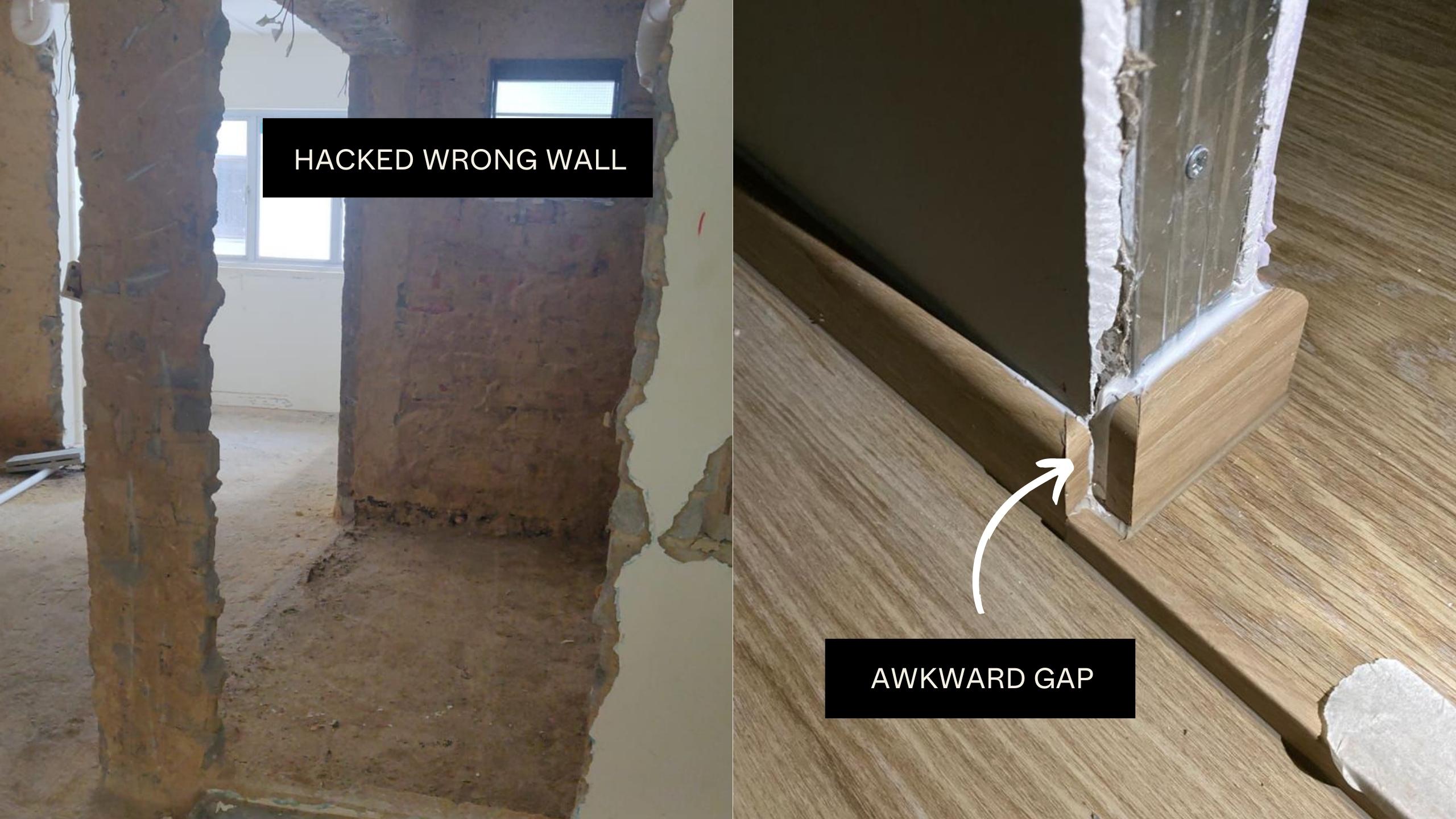
Get The Property Insights Serious Buyers Read First: Join 50,000+ readers who rely on our weekly breakdowns of Singapore’s property market.
A seasoned content strategist with over 17 years in the real estate and financial journalism sectors, Ryan has built a reputation for transforming complex industry jargon into accessible knowledge. With a track record of writing and editing for leading financial platforms and publications, Ryan's expertise has been recognised across various media outlets. His role as a former content editor for 99.co and a co-host for CNA 938's Open House programme underscores his commitment to providing valuable insights into the property market.
With Covid-19 raging, most homeowners reasonably expect the occasional hiccup or miscommunication, when it comes to renovations. Engage the wrong Interior Design (ID) firm, however, and it can quickly become worse than you ever imagined. From a very delayed move-in date to continuous issues with shoddy workmanship, this week, a homeowner shared some of the issues that you might encounter, from a bad ID experience:
Getting off to a rocky start
Our homeowner, L, started having issues with her Interior Design (ID) firm from the very beginning. L sought renovations for her HDB flat, which should have been a fairly straightforward procedure: HDB maintains a Directory of Renovation Contractors (DRC), which should all be approved and qualified.
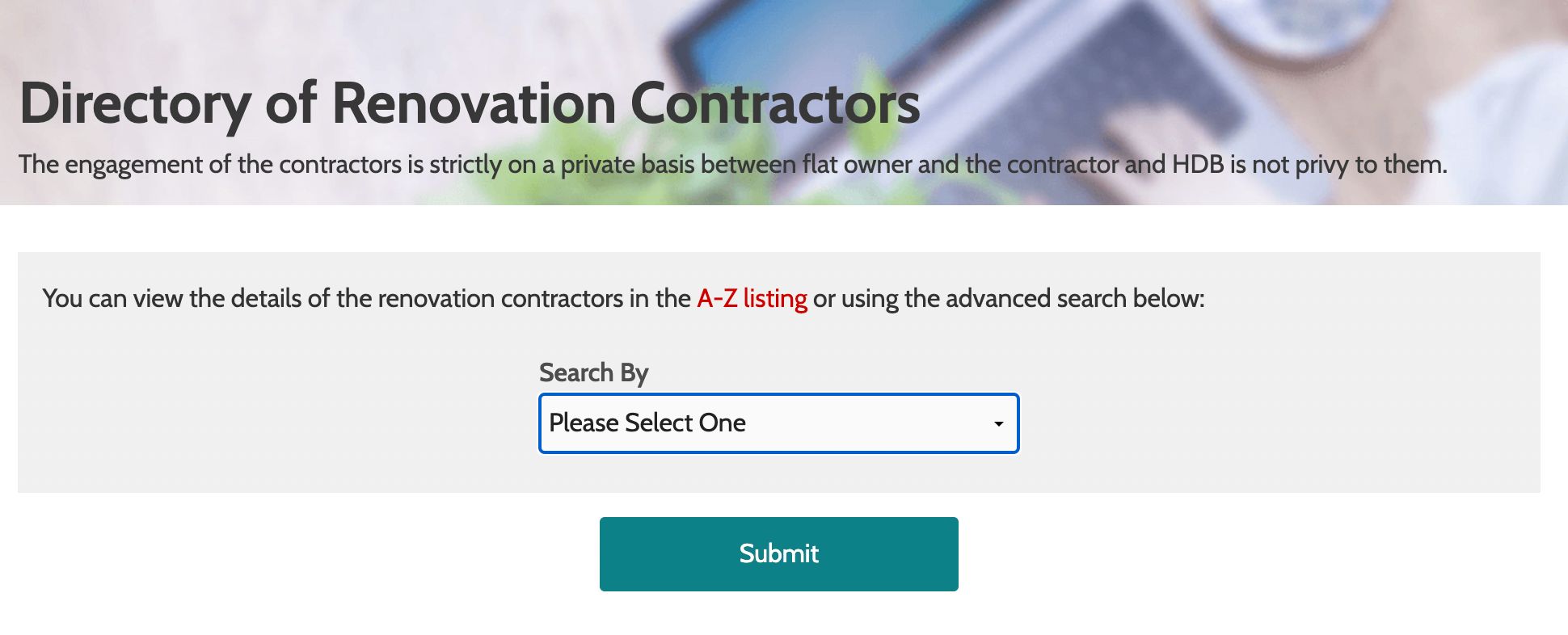
However, L “experienced issues from the start, with the form not providing a working schedule.” This would be compounded over a period of six months when she would struggle with the ID’s poor supervision of subcontractors, limited communication, and what she felt to be a general lack of commitment.
One of the examples of this was the way L was repeatedly handed over to different designers:
“We spoke to three different designers, of which two have left. We thought things would get better after working directly with the boss of the ID, but instead, it got worse.”
An early handover
L initially engaged the ID firm on 14th March of last year. By 17th June, the designer she worked with had provided 3D renderings and a quotation.
On 1st July, L put down a 70 per cent deposit with the firm (which is a hint of a red flag, it’s more common practice to do 10 – 20%). At the same time, however, the designer who had initially worked with L and provided the renderings, said she would be leaving the firm.
The project was then passed on to two other designers, whom we’ll call ID 2 and ID 3.
So, one abrupt change is bad enough. But on 15th August, ID 2 also left the project, thus leaving L’s project solely in the hands of ID 3.
And as if the situation couldn’t get worse, just four days later on the 19th, ID 3 also left, and L was left to work directly with the boss of the ID firm.
While it’s not uncommon for a different designer, such as a sales designer, to give the initial “pitch”, we note that the designers involved were leaving altogether. This is never a good sign for the client, as the new designer may not have the same experience or specialisations as the previous. Also, designers who leave without a proper handover tend to cause delays.
It was all the way until 29th November, however, before the boss of the firm raised such an issue:
“The Interior Design Boss said he didn’t have any of our house renderings,” L says, “Even when he asked his previous designers; and he had to request that we send them to him”.
The worrying implication here is that, from 19th August to 29th November, the ID boss was somehow working on the project without even the renderings.
But perhaps it would have been bad even without changing designers
Even with the first designer, L already had problems. When the project works began in July, for example, L was told the proposed plan for her common toilet wouldn’t fit after all.
This is quite an unusual occurrence, given that most IDs – especially HDB-approved firms – are quite familiar with flat layouts; we suspect the first designer may have limited experience (although we’re also surprised ID 2 and ID 3 didn’t notice the issue right away).
L was told that the design plans for the master toilet were “okay”. But later, she found it was so cramped that – after the toilet bowl was installed – the toilet door would touch your knees when it was opened.
ID 3 even blamed L for choosing that particular design, and also blamed HDB for providing “inaccurate blueprints”. L incurred an added expense of $899 to change the toilet bowl.
Besides this, the ID firm also let contractors hack the wrong wall during renovations. Half the kitchen wall had been hacked, not according to plans – and the IDs only caught it when they met L on-site, to discuss electrical issues.
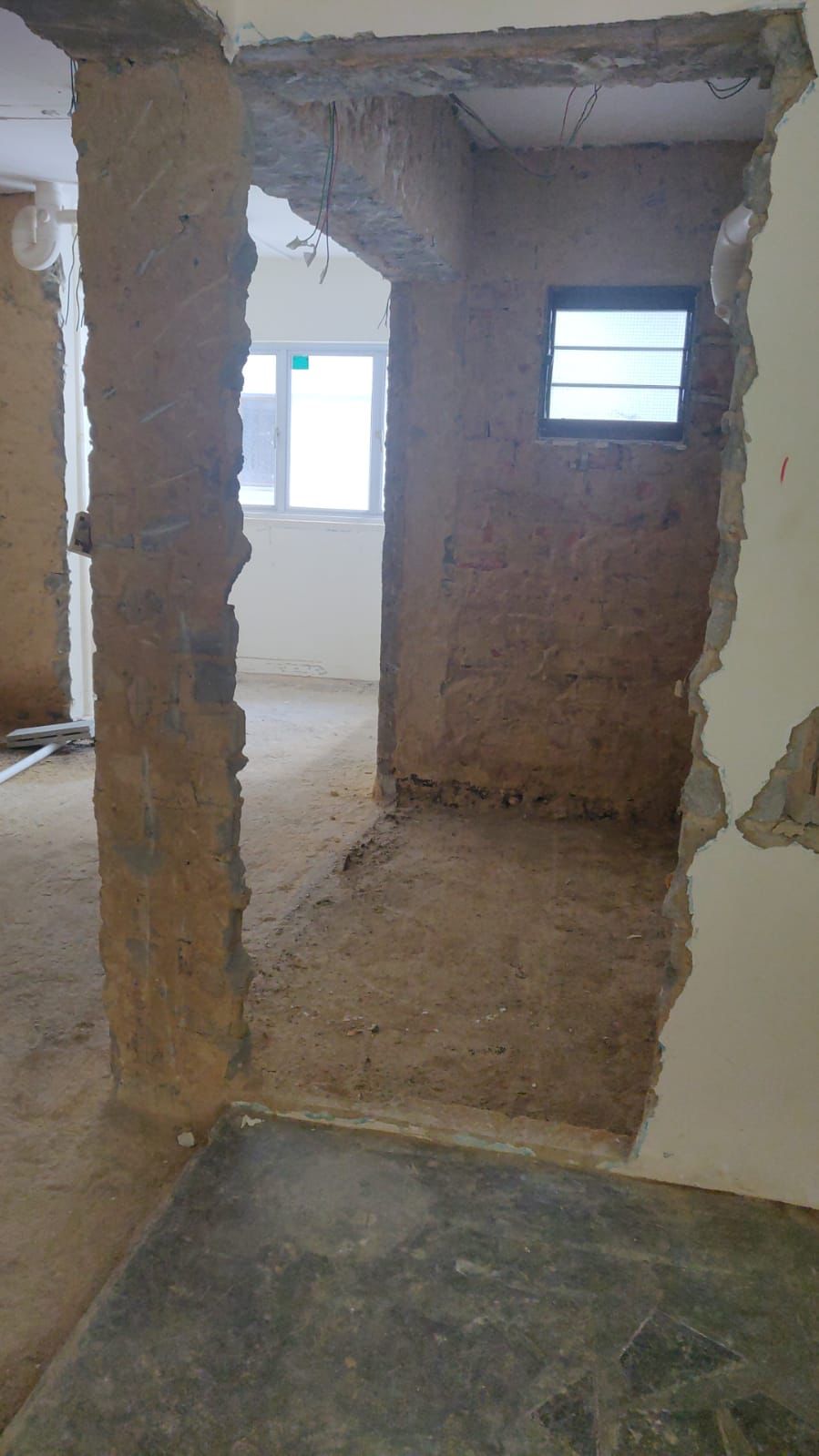
There were other inconveniences that suggest carelessness. Examples include chaining the gate without informing L, thus locking her out (a mistake that would be repeated again later), missing an important gas installation appointment*, and a study room door that opened on the wrong side.
*Singapore Power later informed L that her ID had blamed her for not arranging the appointment. The firm’s boss later admitted that his staff were the ones who missed the appointment and didn’t tell anyone.
Worse still, the place was just poorly maintained with the service yard drainage being choked and not fixed even after reminders.
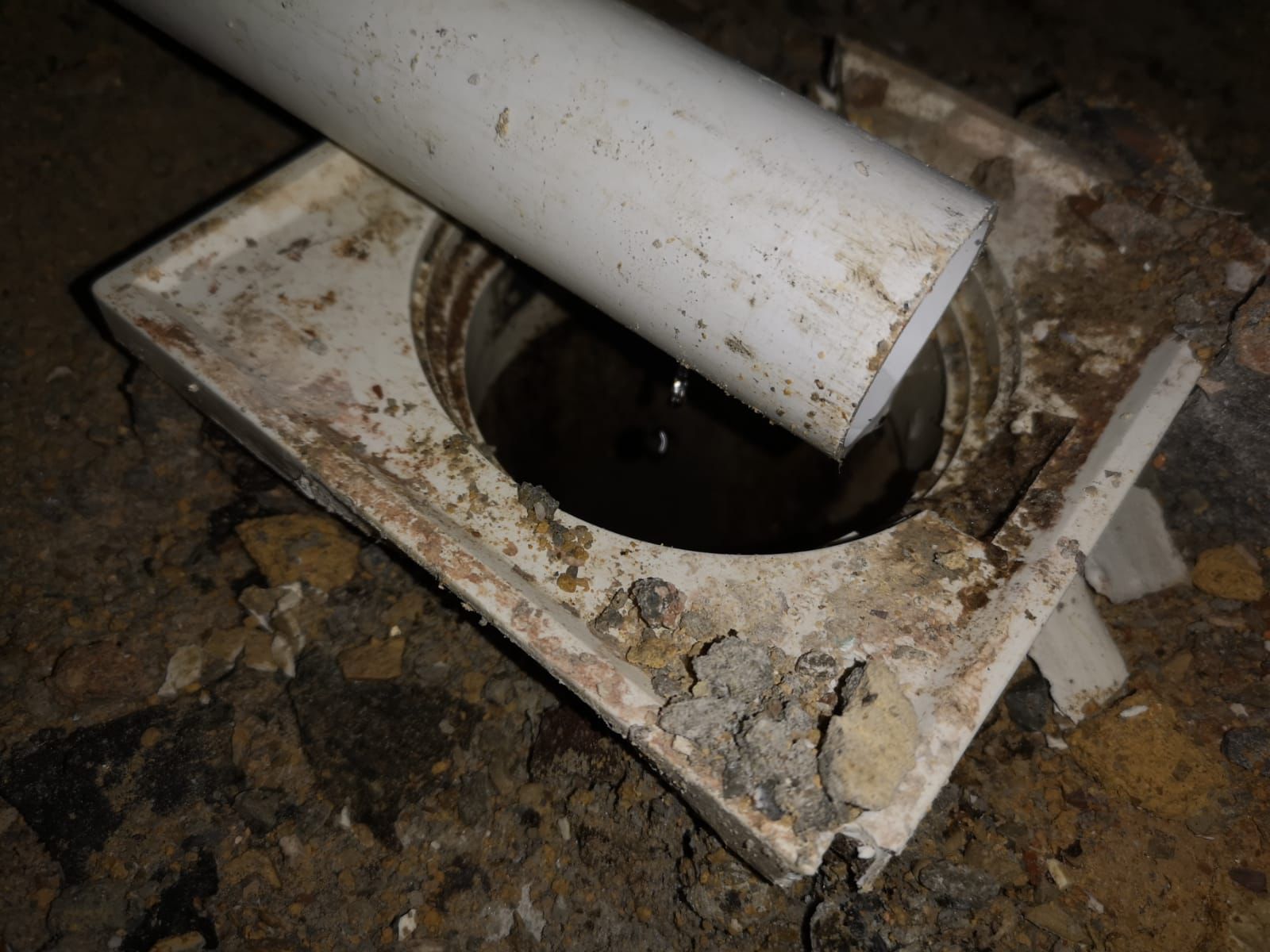
Lack of communication between the ID and contactors
On 8th October, L had to tell the boss of the ID firm that her $3,600 stove had “debris, used masks, cigarette packaging, and rubbish in it.” It was only then that he told L that he would have it cleaned, which she accepted.
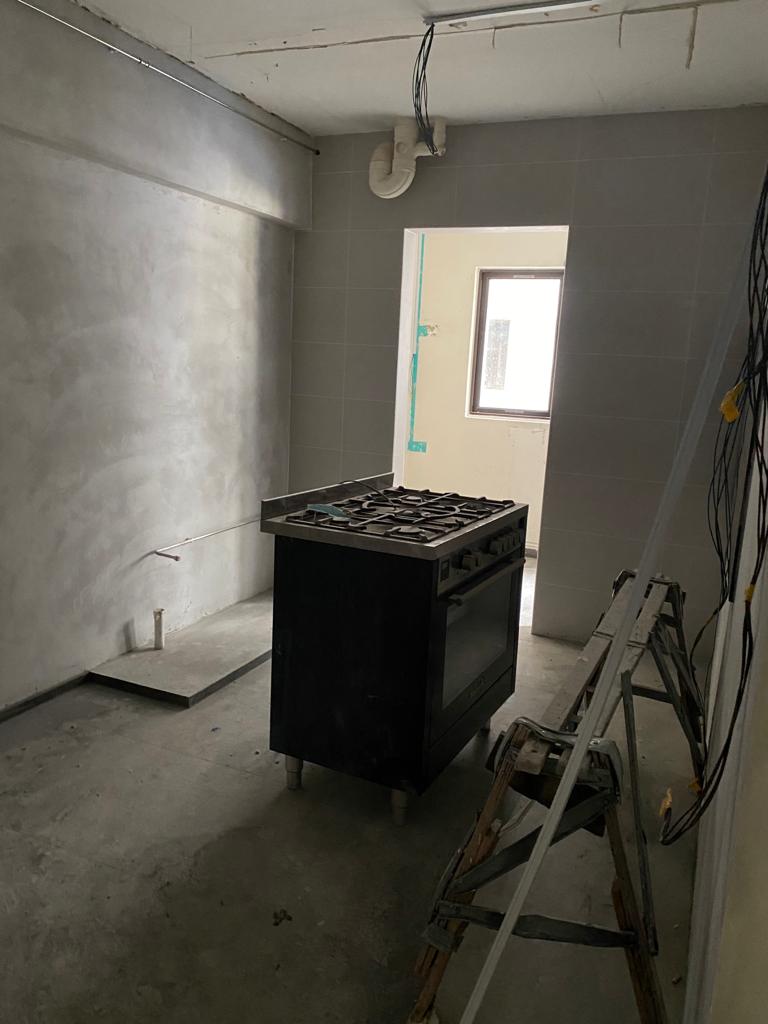
On 11th November, he told L that her $3.6k working stove had been thrown out along with her storeroom shelves. He blamed this on “contractors not asking” before they threw it out, and promised to buy a replacement (which never did materialise).
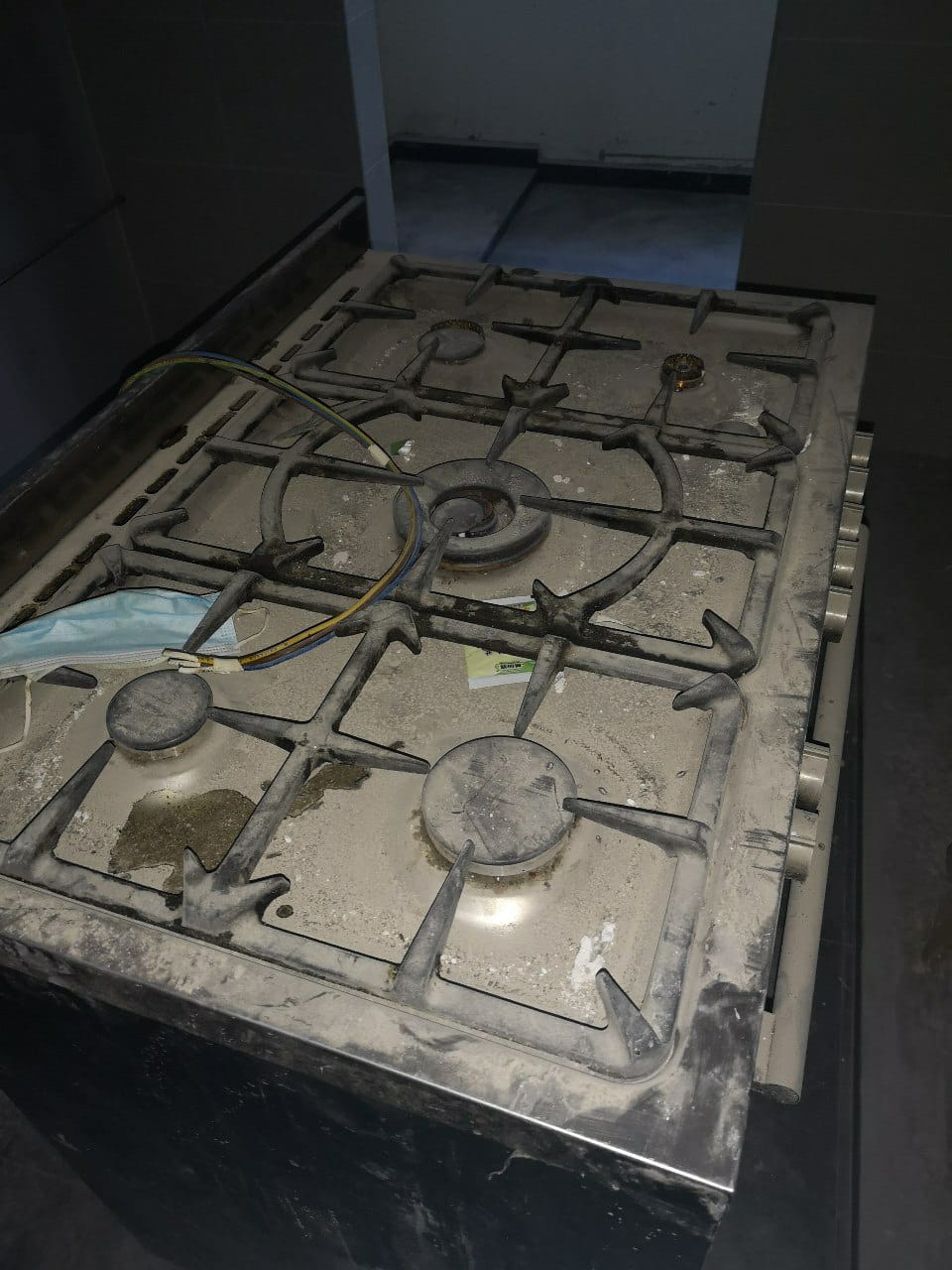

As with the wrong wall being hacked, and the locks being changed without L’s knowledge, this points to a general lack of coordination between the ID and the contractor/sub-contractors.
L had to suffer through further consequences, besides the lost stove. For example, on the 6th of October, the ID had to get L to re-select their house paint colours, as they weren’t available (L also notes that the boss was 40 minutes late for the consult).
The painting was done on the 18th of October. But upon inspection on the 21st, L found that the wrong colour was used for the balcony, and that ceiling paint had been used instead of the selected wall paints.
Painters do make mistakes, but it’s odd that the ID didn’t catch this issue between the 18th and 21st when the homeowner visited. Most IDs would check a job as soon as the contractor declares it done… and most that we know would have panicked and rushed to fix it before the client saw it.
The painting was redone by the 25th of October…albeit with issues of paint dripped on unprotected floors and windows.
The most bizarre twist was the ID boss telling L he could not find a tiler for the toilet. He claimed that this was despite “contacting 20+ tilers”. L had to find the tiler herself, which she did just a day later. The ID boss hired the tiler.
A sudden demand for full payment for carpentry
The final straw for L was when the ID asked for full upfront payment, for carpentry work. Given her past experiences, L was not willing to put down full payment; especially with the ID firm “not providing a work schedule, completion date, or any sort of assurance.”
It was especially infuriating that despite all the issues that have happened so far, the ID firm still did not take ownership of the situation. The height of coordination proposed was just the ID boss creating a Whatsapp Group Chat, so L could speak directly with the carpenters so that they didn’t have to manage the communication anymore.
L made efforts to remove carpentry from the quotation, for a split payment. As L pointed out, the CASE model agreement for renovations does advise against full upfront payment. The model agreement specifies that you should make payment only after satisfactory completion, and never advance large sums unless you’re prepared to lose them.
The ID boss refused all options presented, and wouldn’t go ahead with further work until the full 100 per cent for carpentry was paid. At that point, L decided to stop working with the firm, and pursue a legal solution.
More from Stacked
6 Upcoming New Condo Launches To Keep On Your Radar For The Rest Of 2025
The first half of 2025 has been unusual to say the least, and as I write this, we’re just coming…
These are just scraping the surface of the issues
L encountered several other problems besides the above – from failure to install magnetic tracks in the false ceiling, to improper skirting and plumbing. You can see some of these issues below.
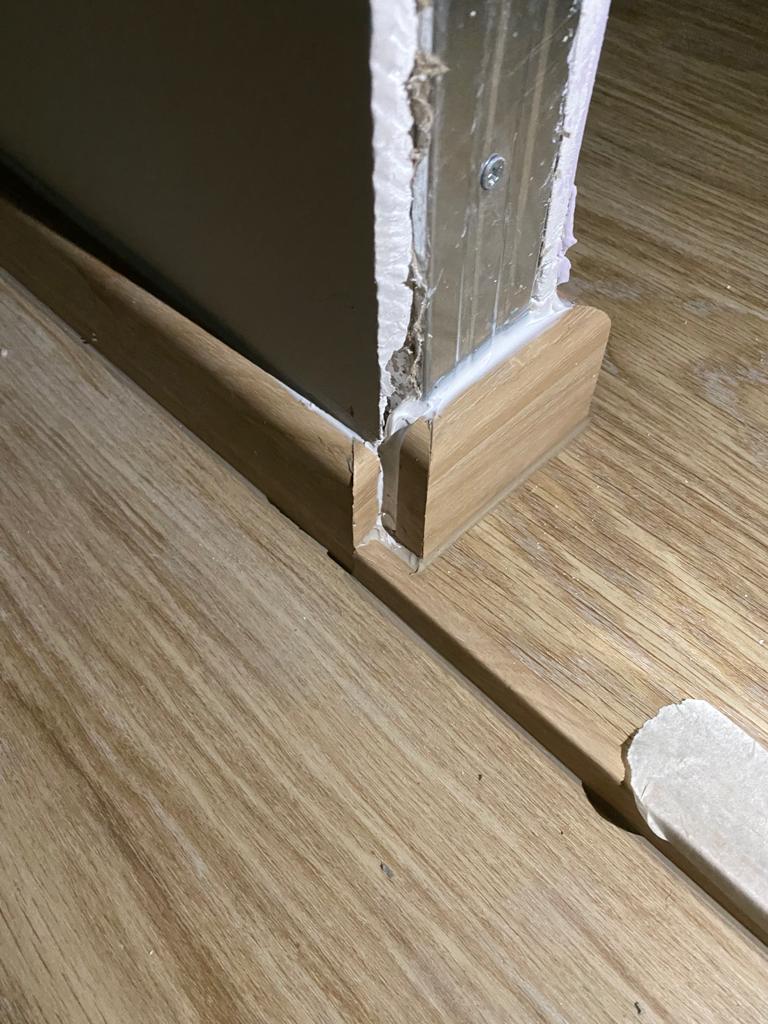
Timeline Summary
For those who are interested in the timeline of events:
Renovation Timeline:
March 2021
14 – Engaged the firm and started working with ID 1
June 2021
17 – 3D rendering & quotation finalised
July 2021
01 – 70% deposit given
01 – ID 1 then informed she was leaving and it was handed over to ID 2 and ID 3
11 – Locked out of our home as they changed the locks without informing
15 – The firm hacked the wrong wall
21 – The firm informed the common toilet design they proposed can’t fit
25 – Tiling started
August 2021
08 – The firm missed a gas installation appointment and didn’t inform
15 – ID 2 left and handed over to ID 3
18 – The study room door was opened at the wrong side
19 – ID 3 was removed from the project & the firm’s boss took over
20 – Informed the firm that the master bedroom toilet bowl if installed will cause the user’s knee to touch the toilet door when opened, asked for an alternative solution
September 2021
05 – Partition outside the master bedroom was built before approval, the build was also wrong
18 – False ceiling done, magnetic track was not installed as required
23 – Purchased an $899 wall hung toilet to fix the master toilet issue, the firm promised after the purchase can immediately proceed with tiling
30 – The firm requested for extension of 2 months to complete the project
October 2021
03 – Toilet flushing system installed
08 – Informed the firm that the $3.6k stove had debris, a used mask, cigarette packaging & rubbish on it. The firm’s boss said they will clean
10 – The firm’s boss asked for carpentry full payment, but tilling had yet to complete.
11 – Partition guy missed appointment
12 – The firm said Tiler & partition guy have Covid, but did not seem to not have alternative contractors
19 – Partition guy missed appointment no re-arrangement of partition works till now
26 – Tiler missed appointment
28 – Tiler started work but not enough & the firm’s boss needed to order tiles. Since tile design was never changed at all so it was strange why there was not enough
November 2021
05 – Tiler missed appointment
10 – Tiler missed appointment
12 – No updates on tiler but was asked to get ready money for carpentry again
12 – Found a leak in the pipes in the master bedroom
14 – Kitchen sink pipe installed in the wrong location
15 – Tiler missed appointment
18 – Vinyl floor measurement
20 – The firm’s boss changed the lock without informing and locked out of the home again
21 – The firm’s boss requested carpentry payments again, while no news about the rest of the pending items. Toilet leak still not fixed
24 – Found our own tiler & passed the contact to the ID firm to liaise
29 – The firm’s boss said he didn’t have any of our house renderings even when he asked the previous designers and requested to send them to him.
December 2021
03 – Tiling finally started 1 month 1 week late from the promised date
06 – Met to re-select house paint colours as he didn’t have them, the firm’s boss was 40 minutes late
10 – Tiling finished
11 – House rubbish cleared but contractors threw away our $3.6k stove & storeroom shelves. The firm’s boss blamed contractors for not asking before they threw. He said he will buy a new one (but didn’t)
16 – Service yard pipe choked
18 – Painting done
21 – Went down and found out that the paint colours were wrong & ceiling paint was used instead of the quoted wall paint
24 – Vinyl laid and completed. There were huge gaps in the skirting
25 – Painters repaint the whole house, paint dripped on the floor & windows
26 – Final negotiation on the carpentry payment terms, requested for a work schedule and completion date. All not agreed and no commitment given
28 – Informed the firm to drop them and requested payments for the stove and shelf. No response till now
Most renovation firms have picked up in quality since the early ‘00s when CASE started to crack down on them. However, L’s experience shows that problem cases still exist.
Based on the alleged behaviour of the ID, we’d speculate that L ran into contact with a firm that took on more clients than it could handle. L notes that:
“Communication was bad from the beginning when speaking to ID 2 and 3. Weeks and weeks of no updates, no communication or responses to us, and unanswered calls.
When the boss took over… we had to message him every other day for updates. He also refused to provide us with a work schedule, which would mitigate the constant need to reach out to them for any updates.”
Coupled with the lack of supervision when it came to contractors, and purported punctuality issues (L says the designers were often late to appointments, once by 45 minutes), it sounds like the ID was stretched thin… and we do wonder if the abrupt departure of the first three designers had something to do with that.
In any case, L’s experience is worth knowing for any home buyers out there today. It’s a smart idea not to make full, upfront payments, regardless of the reputation of the ID firm (things can go wrong even with established firms). You might also want to consider changing designers early on if they’re proving overstretched or non-communicative – the longer you wait, the worse the cost will get.
While it’s been a terrible experience, here is L’s advice so that other homeowners don’t encounter the same issues
To start L suggested to “get at least 5 different IDs for a quotation to compare the price and value that they each provide”. In her experience, there were even IDs that provided 3D rendering even before receiving any deposit, although she did add that such ID firms were few and far between.
While we did advise in a previous article to look at online reviews, L also agreed with our recommendation on taking some of the online reviews with a pinch of salt. The best way to really judge in her opinion is to try to see the actual work that has been done by the ID. Although this may seem like a lot of work, it could be worth the time in order to avoid further headaches down the road. She added, “if you are unable to access the actual work done by the ID, check out for negative reviews and ask the homeowner what happened”.
Her third piece of advice was to include a Work Schedule into the contract before paying any deposit (see sample below). It’s always good to get everything in black and white writing, so both parties are aware of the schedule and responsibilities, and it will be less likely to run into disagreements when everything is agreed to clearly.
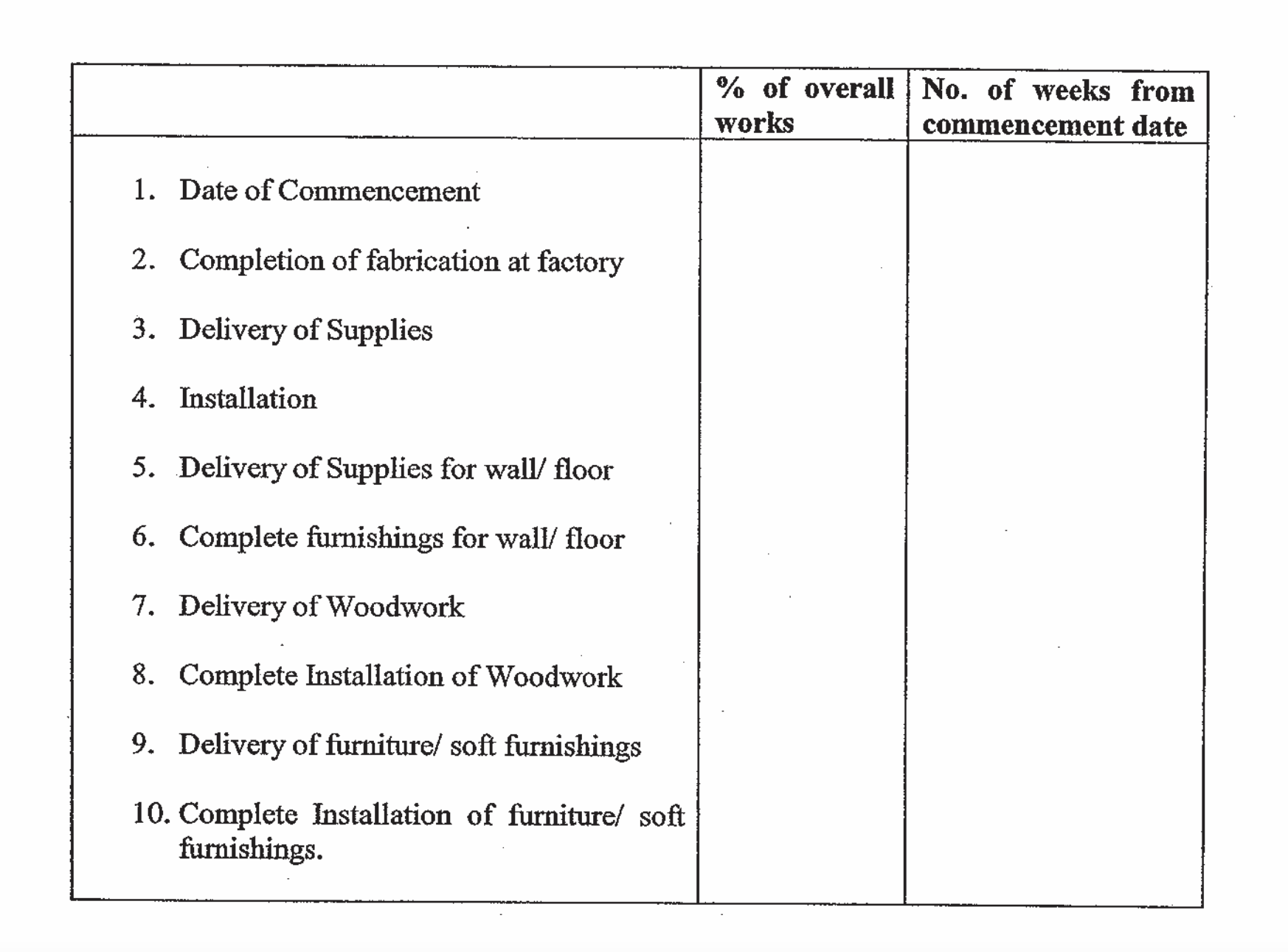
And of course, L added that you’d want to negotiate the terms to your advantage as much as possible. Try to get the lowest minimum down payment to get started with demolition work, so you don’t “get yourself into a hostage situation where you pay too much at the start and you need to chase after your ID”.
Lastly, she helpfully pointed out to follow a contract format in accordance with CASE, which has been drafted to protect the consumer. There’s a clause of “liquidated damages”, where you can stipulate a fixed or determined sum should there be project delays without reasonable reason. Of course, the issue with this would be finding an ID agreeable to such a clause given the current pandemic, but it’s worth negotiating on terms here that would help mitigate some risks on your end.
With 1,300 complaints posted in 2021 (an increase of nearly 50% compared to 2020) against home renovation contractors, L’s story is a warning for those who are about to embark on the next stage of their lives.
For more on homeownership in Singapore, follow us on Stacked. We also provide in-depth reviews of new and resale condos alike and updates on the Singapore private property market.
If you’d like to get in touch for a more in-depth consultation, you can do so here.
Have a home story to share? Email us at stories@stackedhomes.com.
Ryan J. Ong
A seasoned content strategist with over 17 years in the real estate and financial journalism sectors, Ryan has built a reputation for transforming complex industry jargon into accessible knowledge. With a track record of writing and editing for leading financial platforms and publications, Ryan's expertise has been recognised across various media outlets. His role as a former content editor for 99.co and a co-host for CNA 938's Open House programme underscores his commitment to providing valuable insights into the property market.Read next from Homeowner Stories

Homeowner Stories What I Only Learned After My First Year Of Homeownership In Singapore

Homeowner Stories I Gave My Parents My Condo and Moved Into Their HDB — Here’s Why It Made Sense.

Homeowner Stories “I Thought I Could Wait for a Better New Launch Condo” How One Buyer’s Fear Ended Up Costing Him $358K

Homeowner Stories How We Saved $300K And Got Our 4-Room Toa Payoh Flat in Just 7 Months
Latest Posts

Property Market Commentary Why The Singapore Property Market Will Be Different In 2026 — And It’s Not Just About Prices

Editor's Pick 2025 Year-End Review Of The Singapore Property Market: What The Numbers Reveal

Pro This 21-Year-Old Condo Didn’t Sell Out Initially, Yet Became A Top Performer

Editor's Pick How The HDB Resale Market Performed In 2025, And What It Means For 2026 Prices

Editor's Pick 4 Key Trends Reshaping Singapore’s New Launch Condo Market In 2026

Singapore Property News Why More Land Doesn’t Automatically Fix Housing In Singapore

On The Market Here Are The Cheapest 4-Room HDB Flats in Central Singapore You Can Still Buy From $490K

Editor's Pick Should We Buy An Old 99-Year Leasehold Condo To Live In: Will It’s Value Fall When The Lease Runs Out?

Pro How A Once “Ulu” Condo Launched In 1997 Became A Top Performer

Editor's Pick I Reviewed A New Launch 4-Bedroom Penthouse At Beauty World

Property Market Commentary When Renting In Singapore Is The Smarter Move — And Buying Can Wait

Editor's Pick Why Singaporean Families Are Looking At This Landed Enclave From Around $4M

Singapore Property News Lentor’s First Condo Is Complete — The Early Profits May Surprise You

Editor's Pick A Wave Of New HDB Resale Supply Is Coming In 2026: Here’s Where To Find Them

Property Advice We Own A $800K 1-Bedder And A $1.1M 3-Bedder: Is It Possible To Upgrade To A 4-Bedder Condo?


